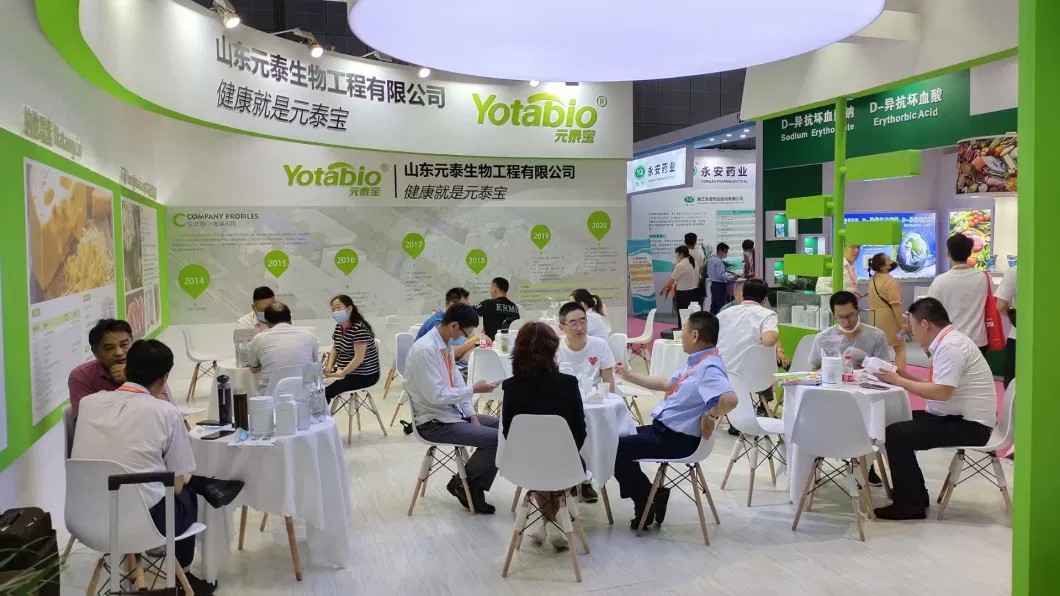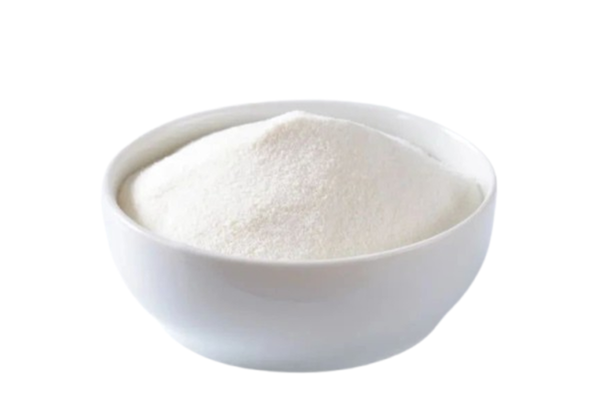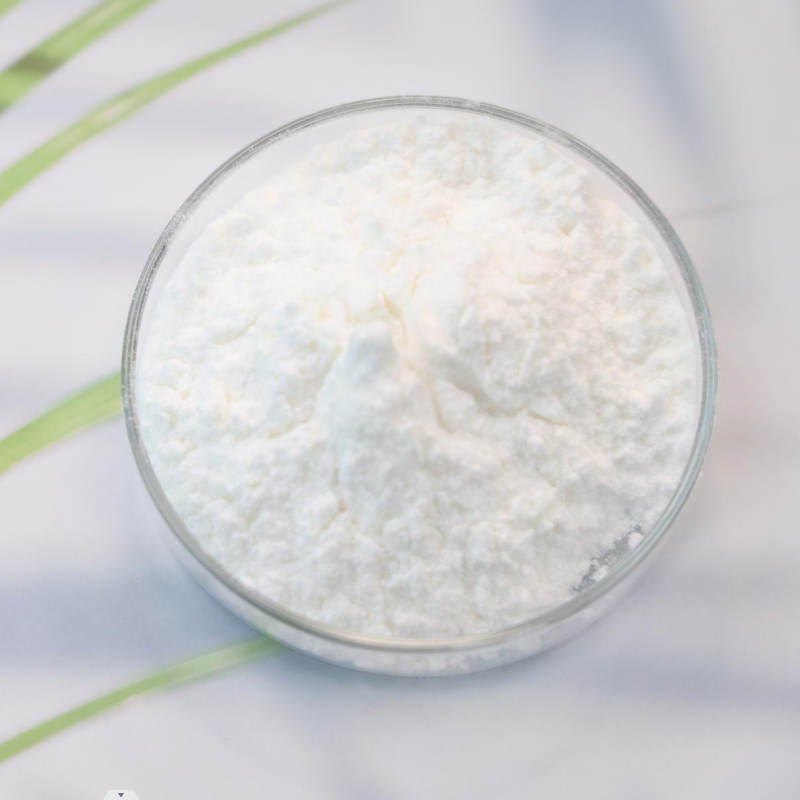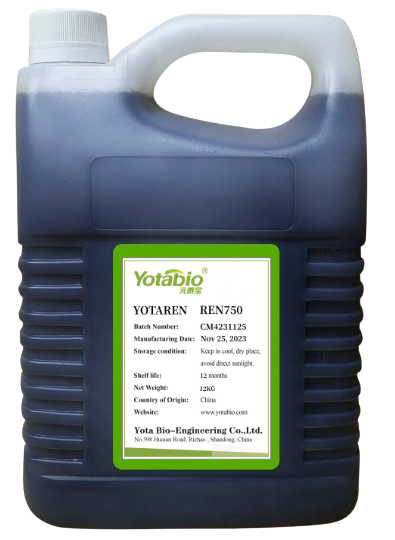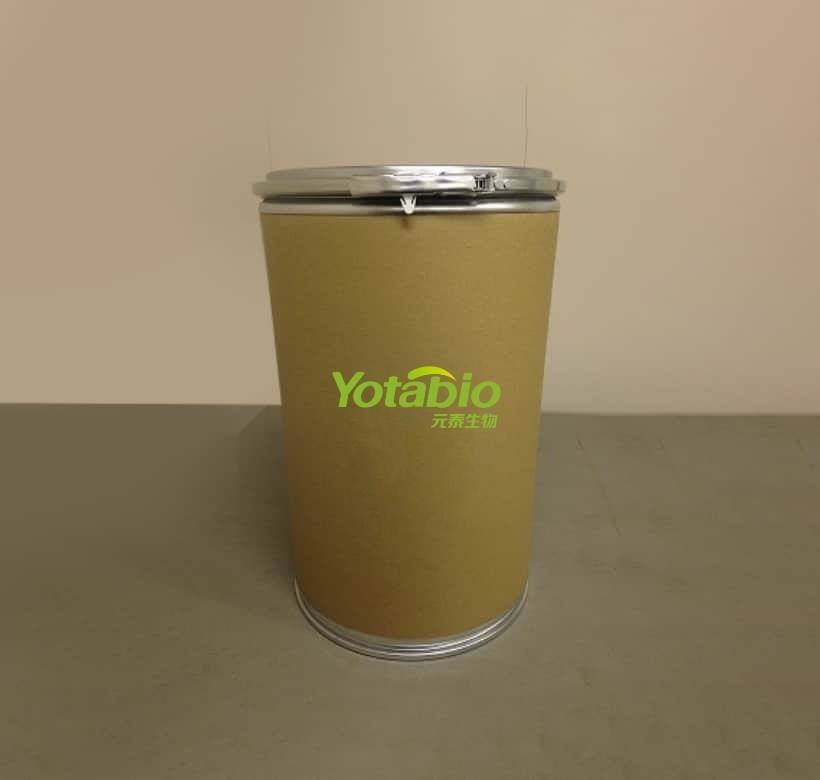Cultured Dextrose Product Description
Cultured dextrose is a food additive created through the fermentation of dextrose, which is essentially glucose, using specific bacterial cultures. This controlled fermentation process results in a mixture of various substances, primarily short-chain organic acids such as propionic acid, acetic acid, and lactic acid, along with small peptides. The precise composition of cultured dextrose can vary depending on the specific strain of bacteria used for fermentation and the conditions under which the process is carried out. These naturally produced metabolites are the key components responsible for the preservative properties of cultured dextrose. It is also known by other names in the industry, including cultured corn sugar, fermented dextrose, and cultured sugar. The combination of these organic acids and peptides works synergistically to inhibit the growth of spoilage microorganisms, thereby extending the shelf life of food products. Understanding the key metabolites and their individual contributions to the overall antimicrobial activity is crucial for evaluating the effectiveness of different cultured dextrose products available on the market.
The production of cultured dextrose typically begins with a source of dextrose, which is commonly derived from corn or wheat , although cane sugar can also be used. The chosen dextrose source is then subjected to a fermentation process involving the introduction of specific bacteria. Common bacterial strains used include Propionibacterium freudenreichii, Lactococcus lactis, and Propionibacterium acidipropionici. These bacteria are cultured in a controlled environment with specific conditions such as temperature and pH that are optimized for the production of the desired metabolites. The fermentation process allows the bacteria to consume the dextrose and produce the antimicrobial organic acids and peptides. Once the fermentation is complete, the resulting mixture undergoes several downstream processing steps to obtain the final cultured dextrose product. These steps typically include pasteurization to eliminate the live bacteria, followed by evaporation and spray drying to yield a powdered form of cultured dextrose. It is important to note that while some traditional methods of producing the initial bacterial cultures may have involved dairy-derived bacteria, there is a growing trend among manufacturers to utilize non-dairy alternatives to cater to the increasing demand for vegan-friendly products. Cultured dextrose is primarily available as a powder, but liquid forms and concentrates are also produced for specific applications. The source of dextrose and the specific bacteria employed in the fermentation process can significantly influence the final composition of the cultured dextrose and may also have implications for its allergenicity and suitability for vegan diets. For instance, cultured dextrose derived from wheat may not be appropriate for individuals with gluten sensitivities, and the use of dairy-derived bacteria, even if not present in the final product, can be a concern for some vegans. In response to these concerns, many manufacturers now offer cultured dextrose produced from non-dairy sources and certified as vegan and gluten-free.
Yotabio cultured dextrose( CD I & CD II) is a cultured dextrose(sugar) based food, produced through the natural fermentation of traditional starter cultures with a long safe history of use in foods, such as Lactococcus lactis and Propionibacterium freudenreichii. Its a natural preservative produced through the fermentation of dextrose (sugar) and resulting in antimicrobial compounds like organic acids, peptides and other metabolites of fermentation. The natural organic acids, peptides contained in cultured dextrose can inhibit the growth of spoilage, yeast and mould bacteria that can cause product deterioration. Consequently, CD I & II extend the shelf life of food products.

Mechanism of Antimicrobial Action:
Cultured dextrose functions as a preservative by inhibiting the growth of a wide range of undesirable microorganisms, including bacteria, yeast, and mold. This antimicrobial activity is primarily attributed to the organic acids produced during the fermentation process. These acids, such as propionic acid, acetic acid, and lactic acid, work by lowering the pH of the food environment, creating conditions that are unfavorable for the survival and proliferation of many spoilage microorganisms. Specifically, propionic acid is known for its effectiveness in inhibiting the growth of molds, making cultured dextrose particularly useful in bakery products where mold spoilage is a common concern. Lactic acid contributes to the antimicrobial effect by lowering the pH and also has direct inhibitory action against certain bacteria. Acetic acid, while also contributing to antimicrobial activity, can also impart a tangy flavor to the food product. In addition to these organic acids, the small peptides produced during the fermentation of dextrose may also play a role in the overall antimicrobial activity of cultured dextrose. It is likely that the combination of these different naturally produced compounds, each with its own mechanism of action, results in a broad-spectrum antimicrobial effect that contributes to the effectiveness of cultured dextrose as a food preservative.
Cultured dextrose has demonstrated effectiveness against a variety of food spoilage organisms, including both Gram-negative and Gram-positive bacteria, as well as molds and some yeasts. For example, it has been shown to inhibit the growth of specific pathogens such as Listeria monocytogenes and E. coli in meat products. The degree of efficacy can be influenced by several factors, most notably the pH of the food product. Generally, a lower pH enhances the antimicrobial activity of the organic acids present in cultured dextrose. This is because at lower pH values, the organic acids are more likely to be in their undissociated form, which allows them to more easily penetrate microbial cell membranes and disrupt their cellular functions. It is also worth noting that while propionic acid is highly effective against molds, it has relatively limited activity against yeasts. This can be an advantage in certain applications, such as yeast-raised baked goods, where mold inhibition is desired without hindering the activity of the yeast during fermentation. Given that the effectiveness of cultured dextrose is highly dependent on the specific food matrix and the target spoilage organisms, food manufacturers are advised to conduct appropriate challenge studies to determine the optimal usage levels for their products and to ensure adequate shelf life under their specific storage conditions.

Basic Info.
Model NO.
Cultured Dextrose
Resource I
Lactococcus lactis
Application
Antimicrobial & Antimolds
Resource II
Propionibacterium
freudenreichii
Appearance
Milky Yellow to White Powder
Transport Package
25kg kraft paper bags
Specification
CD I and CD II
Production Capacity
3000 Tons
Cultured Dextrose Specifications
| Potency (cultured dextrose basis) | ≥ 80% | Lead (Pb) | ≤2 ppm | Total count | < 1000 cfu/g |
| Maltodextrin | < 20% | Arsenic (As) | ≤3 ppm | Salmonella | Absent in 25g |
| pH (1% in aqueous solution) | 6.50-8.00 | Mercury (Hg) | ≤1 ppm | E. coli | <30 MPN/100g |
| Appearance | Yellow powder | E number | None | Allergens | None |
GMO information
According to regulations Ec No. 1829/2003 and 1830/2003. Microorganisms used for the production of this product are not genetically modified.
Storage conditions: Store unopened under 20°C in dry conditions, away from direct sunlight.
Expiry date: 2 years under storage conditions.
Packaging: available in 25kg kraft paper bags, also 25kg drum available as requested.
Regulatory and label Information for Cultured Dextrose:
1.GRAS Status (Generally Recognized as Safe):
The U.S. Food and Drug Administration (FDA) has granted Generally Recognized as Safe (GRAS) status to cultured dextrose produced by the fermentation of skim milk or dextrose with Propionibacterium freudenreichii subsp. shermanii.This designation permits its use as an antimicrobial agent in various food categories, including cheeses, sauces, salad dressings, sausages, soups, deli salads, salsas, pasta, tortillas, muffins, cereal bars, sour cream, yogurt, and hash brown potatoes, at a maximum level of 2 percent by weight in the finished product.This GRAS status was granted in 2003, based on the FDA's acceptance of substantial scientific evidence regarding the efficacy and safety of cultured dextrose.It is important to note that other GRAS notices may exist for cultured dextrose produced using different bacterial strains or substrates, and food manufacturers should verify the specific GRAS status relevant to their chosen ingredient and application.While cultured dextrose has been used in the food industry for decades and is generally considered safe, some sources indicate that the FDA continues to study certain aspects of its use.In regions outside the United States, such as Europe, cultured dextrose and the bacteria used in its production may have other regulatory statuses, such as the Qualified Presumption of Safety (QPS) status.Food manufacturers must ensure they are aware of and comply with all applicable regulations in the regions where their products are sold.
2.Label declaration is dependent on thefinal application. Local regulations should always be consulted concerning the status of this product,as legislation regarding its use in food may vary from country to country. Cultured dextrose is typically declared on food product labels as "cultured dextrose" or sometimes as "natural flavor". In cases where the cultured dextrose is produced using dairy, the label may indicate that the product is "made from cultured skim milk or cultured buttermilk". Accurate labeling is crucial, especially regarding potential allergens such as milk or gluten, depending on the origin of the dextrose and the bacteria used in the fermentation process. Clear and transparent labeling not only helps consumers with dietary restrictions or preferences make informed choices but also builds trust in the product and the manufacturer. As cultured dextrose is often marketed as a clean label ingredient, providing comprehensive information about its source and production process reinforces this image and meets consumer expectations for transparency in food labeling.

Cultured Dextrose in Food Applications:
1.1. Bakery and Confectionery:
Cultured dextrose is widely utilized in the bakery and confectionery industry as a natural mold inhibitor and shelf-life extender in products such as bread, tortillas, muffins, and cakes. Typical usage levels in these applications can range from 0.1% to 1.5% of the product weight, depending on the specific type of baked good and the desired extension of shelf life. For manufacturers seeking to create clean label products, cultured dextrose offers a direct alternative to synthetic mold inhibitors like calcium propionate. In fact, some suppliers suggest a simple 2:1 substitution ratio, where twice the amount of cultured dextrose is used to replace the calcium propionate. This ease of replacement can significantly simplify the reformulation process for companies transitioning to more natural ingredients. The effectiveness of cultured dextrose in inhibiting mold growth in bakery products is primarily due to the presence of propionic acid, one of the key metabolites produced during the fermentation process.
1.2. Dairy and Alternatives:
In the dairy industry, cultured dextrose is used in a variety of products, including yogurt, sour cream, cheese, and also in plant-based dairy alternatives, to extend their shelf life and in some cases, to improve their texture and flavor. It can help maintain the desired microbial balance in fermented dairy products and prevent the growth of spoilage molds during storage, thus contributing to the overall quality and safety of these products. In some instances, cultured dextrose can also be used as a starter culture in the production of certain fermented dairy items. For non-fermented dairy products and plant-based alternatives, it functions primarily as an antimicrobial agent, inhibiting the growth of undesirable bacteria and extending the time the product remains fresh. The inclusion of cultured dextrose in dairy and non-dairy formulations aligns with the growing consumer preference for products made with natural preservatives.
1.3. Meat and Poultry Products:
Cultured dextrose finds application in various meat and poultry products, particularly in processed items like sausage, beef jerky, hot dogs, and deli meats. In these products, it acts as a natural preservative by inhibiting the growth of potentially harmful bacteria such as Listeria monocytogenes and E. coli, thereby enhancing food safety and extending the product's shelf life. In some cases, cultured dextrose is used in combination with other natural antimicrobial agents, such as buffered vinegar, to achieve an even more robust preservation effect. For meat processors seeking to meet the increasing consumer demand for natural ingredients, cultured dextrose provides a clean label alternative to traditional synthetic preservatives without compromising the safety or shelf life of their products. The effectiveness of cultured dextrose in these applications is particularly valuable given the susceptibility of meat and poultry to microbial spoilage.
1.4. Beverages and Dressings:
Cultured dextrose is also utilized as a natural preservative in the beverage industry, finding its way into products like fruit juices and soft drinks, as well as in salad dressings. In beverage applications, it is often crucial to use cultured dextrose with a high concentration of propionate at relatively low levels to prevent any adverse effects on the color or taste of the final product. For salad dressings, it can provide a clean label alternative to traditional preservatives like benzoates and sorbates. The acidic nature of many beverages and dressings can complement the antimicrobial action of the organic acids present in cultured dextrose, making it an effective preservation solution in these categories. However, careful formulation is necessary to ensure that the desired sensory profile of the beverage or dressing is maintained.
1.5. Other Food Categories:
Beyond the major applications already discussed, cultured dextrose is also used in a wide array of other food categories where shelf life extension and microbial control are important. These include dips, spreads, condiments, sauces, pasta products, pet food, and frozen prepared foods. Its versatility in functioning across different food matrices and its effectiveness against various types of microorganisms make it a valuable ingredient for manufacturers looking to offer cleaner label options to consumers in diverse product segments.

Benefits Over Synthetic Preservatives:
One of the primary advantages of cultured dextrose is its perception as a "natural" and "clean label" ingredient, which is highly appealing to today's health-conscious consumers. It offers a broad spectrum of antimicrobial activity, effectively inhibiting the growth of bacteria, yeast, and mold in various food systems. In some applications, cultured dextrose can also act as a flavor enhancer and help control the pH of the food product. Unlike some traditional preservatives that may only be effective at acidic pH levels, certain cultured dextrose products can be effective even at neutral pH. Furthermore, by extending the shelf life of food products, cultured dextrose can contribute to a reduction in food waste. For food manufacturers looking to cater to the growing demand for natural and recognizable ingredients, cultured dextrose provides a valuable tool for achieving effective preservation while maintaining a clean label.

Enzymes and cultures play a key role in ensuring that dairy products have the best possible flavor and appearance, while staying fresh for longer. YOTABIO can help you plan your food ingredient purchases through natural solutions. We focus on the production of food preservatives and enzymes.
YOTA BIO-ENGINEERING CO., LTD (YOTABIO) is located at 398 Huan'an Road, RETDA, Rizhao, P. R. China, a beautiful coastal city in Shandong Province.
Our production base now covers about 38,000 square metres and there are 150 staff members working to produce high quality bio-food additives such as Nisin, Natamycin, Polylysine and Transglutaminase (TG), Lysozyme, Rennet, Chymosin, Cultured dextrose and wheat for the food industry since 2016. Thanks to our diligent workers, YOTABIO is able to provide stable with quality products to our customers all over the world.
YOTABIO is committed to becoming a leading manufacturer of bio-food additives in the food industry in China, by having a strong innovation in the R&D area, the well-designed & established manufacturing facilities and a responsive & creative customer support system.
Deeply rooted in YOTABIO's corporate culture, innovation and expertise are at the core of new developments. YOTABIO is constantly innovating and improving its range of food ingredients.
The innovation team at YOTABIO brings together the necessary energy, scientific and technical skills to serve a common goal: to continuously provide the best products and service to our customers.
Using bio-based materials and state-of-the-art biotechnology, we can help you meet the various consumer demands for food preservation and processing. We can also help you reduce costs and improve food safety by maintaining freshness & quality for the intended shelf life of the food.








